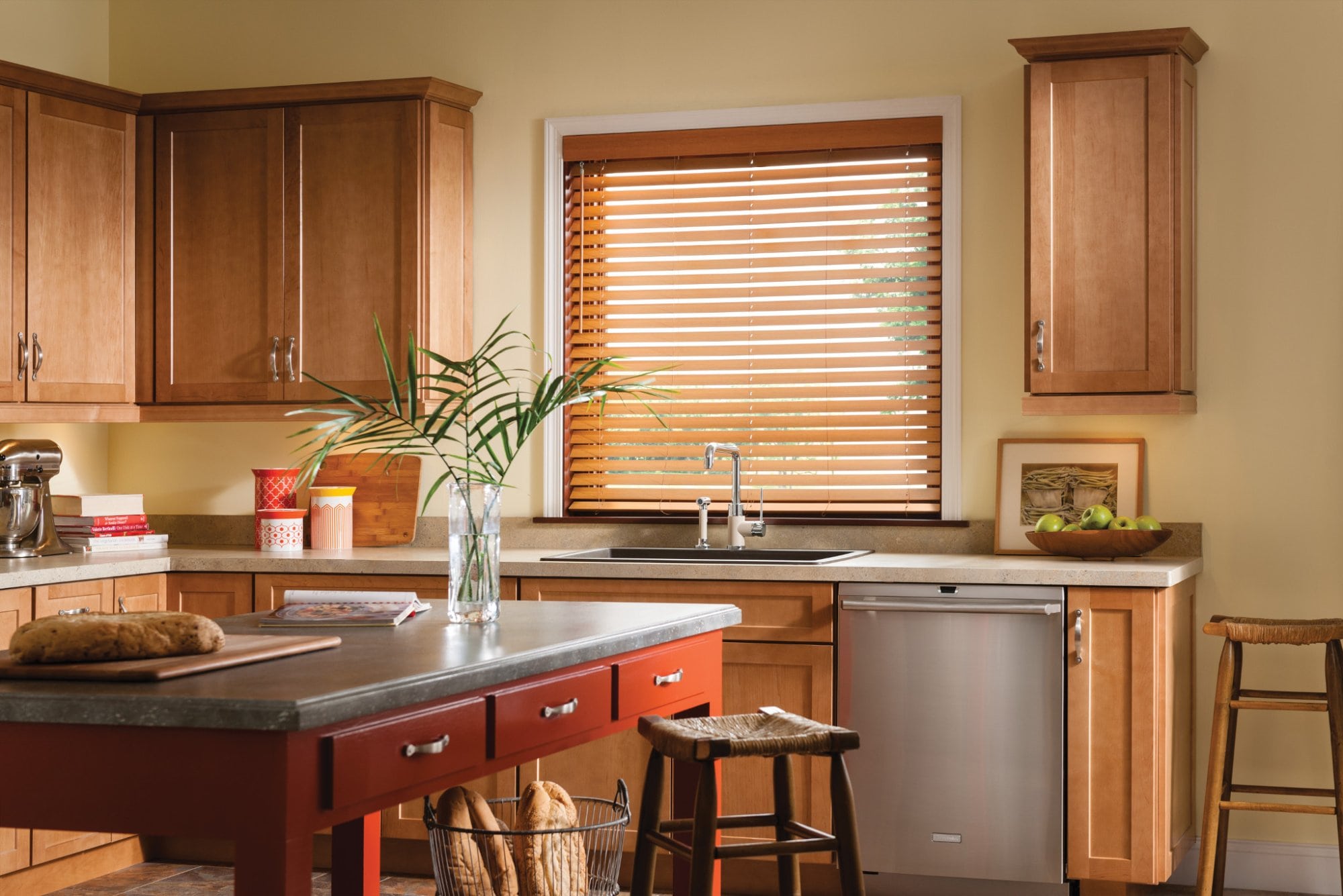
The Differences Between Faux Wood and Wood Blinds
Faux wood and wood blinds are two popular types of blinds amongst homeowners. Both types of blinds are very similar in appearance, but they are different in several ways. Therefore, choosing between them can be a tad confusing for first-time buyers.
We’ll cover the differences and benefits in this faux wood blinds vs. wood blinds article to help you make the best decision.
The Differences Between Faux Wood Blinds and Wood Blinds
The key difference between faux wood blinds and wood blinds is the material used in the construction process.
Manufacturers make faux wood blinds using foam wood, PVC vinyl, and composite materials. They stain the final product to look like natural wood, hence the name.
On the other hand, wood blinds feature real wood such as oak, bamboo, cherry, and other types of wood.
Why Choose Faux Wood Blinds Over Wood Blinds?
Some of the top reasons for choosing faux wood blinds include the following:
- More affordable choice: Faux wood blinds are generally less expensive than real wood blinds.
- Better moisture resistance: The faux wood materials hold up better in wet and humid environments, making them great for bathrooms, kitchens, and other windows exposed to the elements.
- Easy maintenance: Cleaning faux wood blinds is simple. You can wipe the slats down using a lint-free cloth dipped in a mixture of water and a household cleaning agent.
- Reduced risk of wear and tear: Faux wood blinds won’t warp or crack because the materials used are highly flexible.
Why Choose Wood Blinds Over Faux Wood?
Some of the reasons to go with wood blinds in the faux wood blinds vs. wood blinds debate include the following:
- More attractive choice: Faux wood blinds do a good job of mimicking the look of real wood, but it’s impossible to match the alluring appearance of natural wood. Your visitors can tell the difference.
- Easier operation: Real wood blinds are lighter than faux wood blinds. Therefore, they are easier to control, especially for large windows—they won’t feel too heavy during operation.
- Better Insulation: Real wood will offer more insulation against the elements and dampen outside noise filtering into a room. Plus, improved insulation means better energy efficiency overall.
Faux Wood Blinds vs. Wood Blinds: Which Should You Choose?
You should choose wood blinds as your window covering if you want that authentic warmth you can only get from real wood. However, if you’re worried about durability and would rather not worry about replacing the blinds in a few years, faux wood blinds provide a good compromise.
Alternatively, you can combine both options—use wood blinds in parts of the home where they are less likely to get exposed to the elements and faux wood in trickier spots.
Frequently Asked Questions
Which Is More Expensive Between Wood and Faux Wood Blinds?
Wood blinds are more expensive because they feature real wood. Faux wood blinds are cheaper because it’s more cost-effective to produce blinds with synthetic materials.
Are Wood Blinds Lighter in Weight Than Faux Wood Blinds?
Wood blinds are lighter in weight than faux wood options, making them a better fit for larger windows.
Will Faux Wood Blinds Provide Insulation?
Faux wood blinds offer some insulation against the elements in the winter and summer. However, real wood tends to do better in this area. If your home needs more insulation, explore other options that are likely to move the needle a lot more than your choice of blinds.
Faux Wood and Wood Blinds You Can Trust in Raleigh
Whatever side of the divide you choose in the faux wood blinds vs. wood blinds debate, you can count on us to provide the perfect wood window treatments.
At Made in The Shade Blinds & More, we have a rich selection of faux wood and wood blinds from which to choose. Our faux wood blinds are available in many wood grain finishes, while our wood blinds come in natural stains. Book an appointment online today to discuss your preferences.














